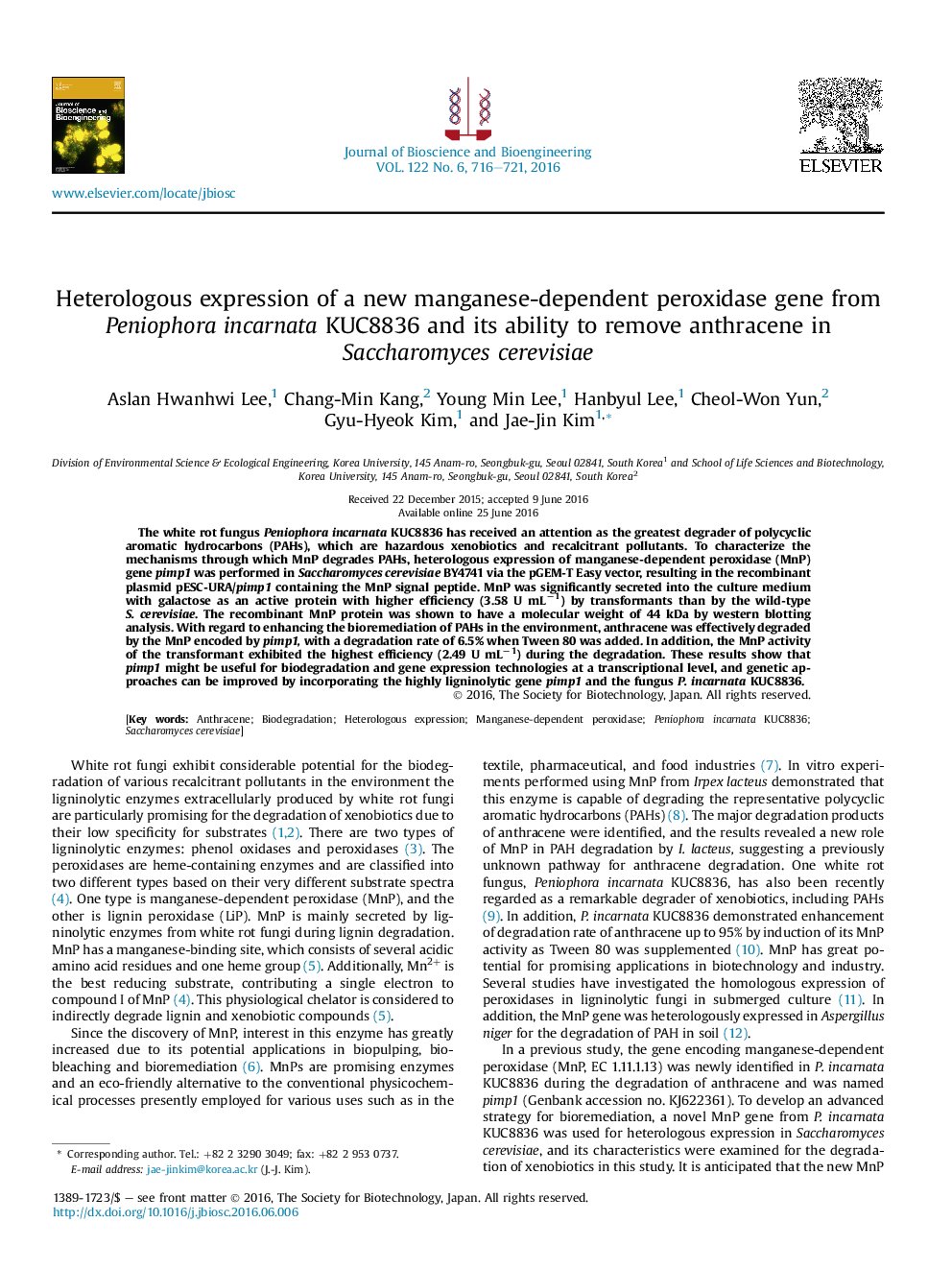| Article ID | Journal | Published Year | Pages | File Type |
|---|---|---|---|---|
| 4753475 | Journal of Bioscience and Bioengineering | 2016 | 6 Pages |
â¢Transformation of Saccharomyces cerevisiae with a new MnP gene, pimp1.â¢Heterologous expression of MnP gene from Peniophora incarnata.â¢Ability of MnP gene to remove PAH in S. cerevisiae.â¢Degradation rate of PAH was enhanced by the transformant with addition of Tween 80.
The white rot fungus Peniophora incarnata KUC8836 has received an attention as the greatest degrader of polycyclic aromatic hydrocarbons (PAHs), which are hazardous xenobiotics and recalcitrant pollutants. To characterize the mechanisms through which MnP degrades PAHs, heterologous expression of manganese-dependent peroxidase (MnP) gene pimp1 was performed in Saccharomyces cerevisiae BY4741 via the pGEM-T Easy vector, resulting in the recombinant plasmid pESC-URA/pimp1 containing the MnP signal peptide. MnP was significantly secreted into the culture medium with galactose as an active protein with higher efficiency (3.58 U mLâ1) by transformants than by the wild-type S. cerevisiae. The recombinant MnP protein was shown to have a molecular weight of 44 kDa by western blotting analysis. With regard to enhancing the bioremediation of PAHs in the environment, anthracene was effectively degraded by the MnP encoded by pimp1, with a degradation rate of 6.5% when Tween 80 was added. In addition, the MnP activity of the transformant exhibited the highest efficiency (2.49 U mLâ1) during the degradation. These results show that pimp1 might be useful for biodegradation and gene expression technologies at a transcriptional level, and genetic approaches can be improved by incorporating the highly ligninolytic gene pimp1 and the fungus P. incarnata KUC8836.
